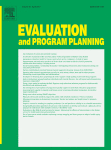 This article is set to be published on April 2017 in the Volume 61 of Evaluation and Program Planning and is already available online in open access. It was written by Anne Guichard, Émilie Tardieu, Christian Dagenais, Kareen Nour, Ginette Lafontaine and Valéry Ridde and it focuses on the combined use of concept mapping and focus groups to adapt a health equity tool in Canada. You can download the article hereunder.
This article is set to be published on April 2017 in the Volume 61 of Evaluation and Program Planning and is already available online in open access. It was written by Anne Guichard, Émilie Tardieu, Christian Dagenais, Kareen Nour, Ginette Lafontaine and Valéry Ridde and it focuses on the combined use of concept mapping and focus groups to adapt a health equity tool in Canada. You can download the article hereunder.
Suggestion citation:
Highlights:
- The combined use of CM and focus group provide more operational ideas to support change from intervention and planning settings.
- Focus groups enhance the concept mapping experience for participants who may be frustrated by the methodological constraints.
- This design is appropriate for investigating targets with multiple levels of complexity.
Abstract:
The aim of this project was to identify and prioritize a set of conditions to be considered for incorporating a health equity tool into public health practice. Concept mapping and focus groups were implemented as complementary methods to investigate the conditions of use of a health equity tool by public health organizations in Quebec. Using a hybrid integrated research design is a richer way to address the complexity of questions emerging from intervention and planning settings. This approach provides a deeper, operational, and contextualized understanding of research results involving different professional and organizational cultures, and thereby supports the decision-making process. Concept mapping served to identify and prioritize in a limited timeframe the conditions to be considered for incorporation into a health equity tool into public health practices. Focus groups then provided a more refined understanding of the barriers, issues, and facilitating factors surrounding the tools adoption, helped distinguish among participants’ perspectives based on functional roles and organizational contexts, and clarified some apparently contradictory results from the concept map. The combined use of these two techniques brought the strengths of each approach to bear, thereby overcoming some of the respective limitations of concept mapping and focus groups. This design is appropriate for investigating targets with multiple levels of complexity.